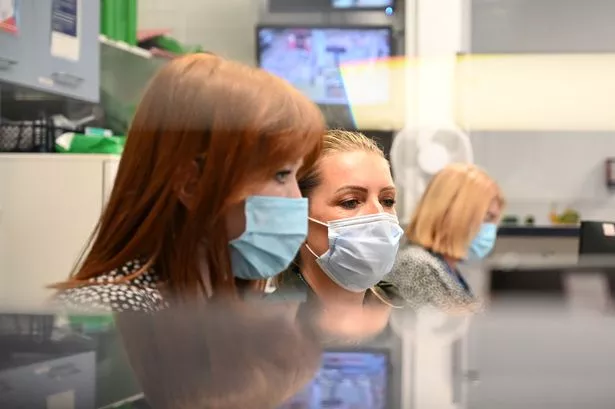The National Health Service (NHS) in England is grappling with an unprecedented surge in flu cases this winter, a crisis compounded by ongoing pressures from COVID-19, Strep A infections, and the persistent backlog of routine care accumulated during the pandemic. Numerous hospital trusts across the country have declared critical incidents, signaling that they are struggling to cope with the overwhelming demand for services. Emergency departments are reporting record numbers of patients, with some describing the situation as busier than ever before. The 246% increase in flu cases compared to the previous year has placed an immense strain on resources, leading to prolonged wait times, ambulance queues, and difficulties in discharging patients into appropriate care settings. This confluence of factors has created a perfect storm for the NHS, pushing it to the brink of its capacity and raising serious concerns about patient safety and staff well-being.
The dramatic rise in flu cases is largely attributed to several factors. Firstly, the relatively mild flu seasons of the past two years, due to social distancing and lockdown measures implemented during the COVID-19 pandemic, have resulted in a lower level of population immunity. This has created a more susceptible population for the virus to spread rapidly. Secondly, the dominant strain circulating this winter appears to be particularly virulent, causing more severe illness and hospitalizations. Finally, the co-circulation of other respiratory viruses, such as COVID-19 and Respiratory Syncytial Virus (RSV), is further exacerbating the situation, placing an even greater burden on already stretched healthcare services. These converging respiratory illnesses are contributing to the overall increase in hospital admissions and intensifying the pressure on critical care units.
The strain on A&E departments is particularly acute. Overcrowded waiting rooms, long delays in seeing a doctor, and difficulties in admitting patients to hospital wards are becoming increasingly common. Patients are facing extended wait times for ambulances, and paramedics are often experiencing significant delays in handing over patients at hospitals due to lack of available beds. This bottleneck in the system is creating a domino effect, impacting the ability of ambulance services to respond to other emergencies in the community. The pressure on A&E staff is immense, leading to concerns about burnout and the potential for medical errors.
Beyond the immediate crisis in emergency departments, the surge in flu cases is impacting the entire healthcare system. Elective surgeries and routine procedures are being postponed to free up beds and staff for more urgent cases. This further exacerbates the existing backlog of elective care, which has already grown significantly during the pandemic. The delays in accessing treatment can have serious consequences for patients, leading to worse health outcomes and increased anxiety. Furthermore, the pressure on social care services is also contributing to the difficulties in discharging patients from hospitals, even when they are medically fit to leave. This contributes to bed blocking, further limiting the capacity of hospitals to admit new patients.
The NHS is implementing various strategies to mitigate the crisis. These include increasing bed capacity where possible, streamlining discharge processes, and redeploying staff to critical areas. Hospitals are also working closely with community healthcare providers to ensure patients receive appropriate care outside of the hospital setting. Public health campaigns are emphasizing the importance of vaccination against flu and COVID-19, as well as promoting good hygiene practices to prevent the spread of infection. However, the scale of the challenge is significant, and the NHS requires sustained investment and support to address the underlying systemic issues that have contributed to this crisis.
The current situation highlights the fragility of the NHS and the urgent need for long-term solutions. The ongoing pressures from multiple respiratory viruses, coupled with the existing backlog of care and workforce shortages, have created a perfect storm that is pushing the system to its limits. Addressing this crisis requires a multi-faceted approach, including increased investment in healthcare infrastructure, workforce development, and preventative measures. It also necessitates a focus on strengthening community healthcare services and improving the integration of health and social care to facilitate timely discharge from hospitals. Ultimately, a sustainable and resilient healthcare system requires a long-term commitment to invest in capacity, improve workforce planning, and address the underlying social determinants of health that contribute to health inequalities.














